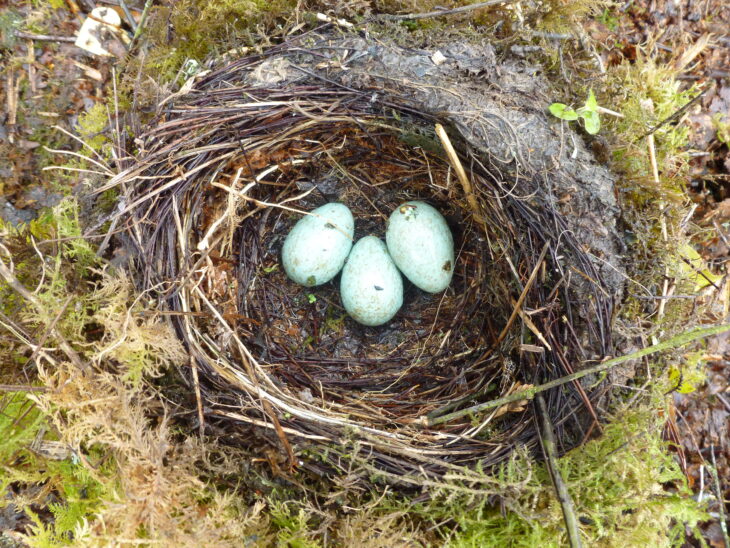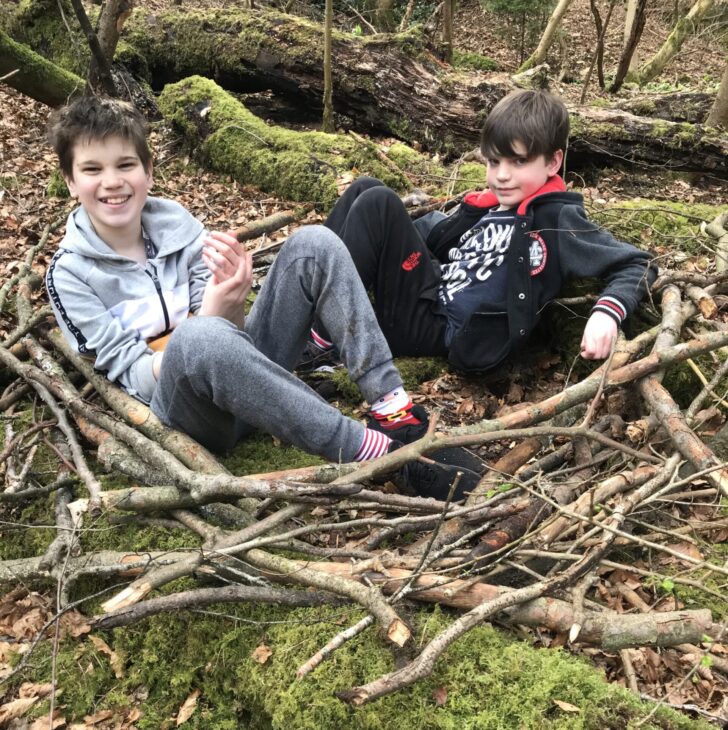If you’ve ever wondered how a bird builds its nest, what better way to learn than by building a nest yourself!
Birds make their nests from all sorts of natural materials, and different species tend to use different things depending on what’s available in their habitat. Some of the materials that birds use include twigs, feathers, moss, lichen and even spider silk.
By the coast, there are a wide variety of nest-makers. For example, puffins mostly nest underground in burrows and crevices, whereas gannets nest right on the cliff-side, but they make hardly any nest at all! Seabirds often nest in places where land predators can’t reach them, i.e. cliffs. Many shore birds are ground nesting, which can leave them more vulnerable to predation and disturbance. During the summer, some waders lay their eggs on the sand, which is why you may see signs saying no dogs on the beach from May to September – this is to try and help protect the nests. So, when visiting the beach during these months, remember to be mindful of these nesting birds – they’re eggs can be well camouflaged!

Blackbirds nest (c) Lizzie Wilberforce
The key to a successful nest is to make it large enough to hold the eggs and the parent, stable enough to withstand wind, warm enough to prevent the eggs and chicks getting cold, and camouflaged from predators.
Do you think you could build a successful nest? Why not become a nest architect for the day and give it a try!
What you will need:
- Container to collect things in (e.g. basket, bucket)
- Natural materials collected (e.g. sticks, feathers, leaves, moss and grass)
How to make a bird’s nest:
Nests can be built indoors or outdoors, depending on the size and materials being used. You can explore the best way to construct a nest by trial and error, but here are few instructions to guide the way…
- Have you ever seen a bird’s nest? Look around outside – can you see any in trees or on buildings? What are they made of?
- Start by building a framework for your nest with larger sticks or rocks, interlocking them to form the basic structure. Use smaller sticks or rocks to keep adding to the structure, filling in any large holes.
- Once the outer structure of the nest is looking sturdy, find softer materials such as feathers and moss to line the nest.
- Show your finished nests to each other. Would eggs withstand wind? Are they warm enough? Are the camouflaged?
- The size of the nest, amount of material available and the size of the area the activity is taking place in should be considered before nest building begins. You could put model eggs inside for decoration, or sit in it for a photo if it’s a big nest!
In a group? Why not split up into teams and make it a challenge and vote for the best nest at the end!
EXTRA: Seabirds need nests too! Where do you think they could build them and what would they be made of? Download our worksheet below to test your seabird nesting knowledge!

Bird nest making! © Lyndsay Mark
Share your photos with us by using #DiscoverLearnPlay
